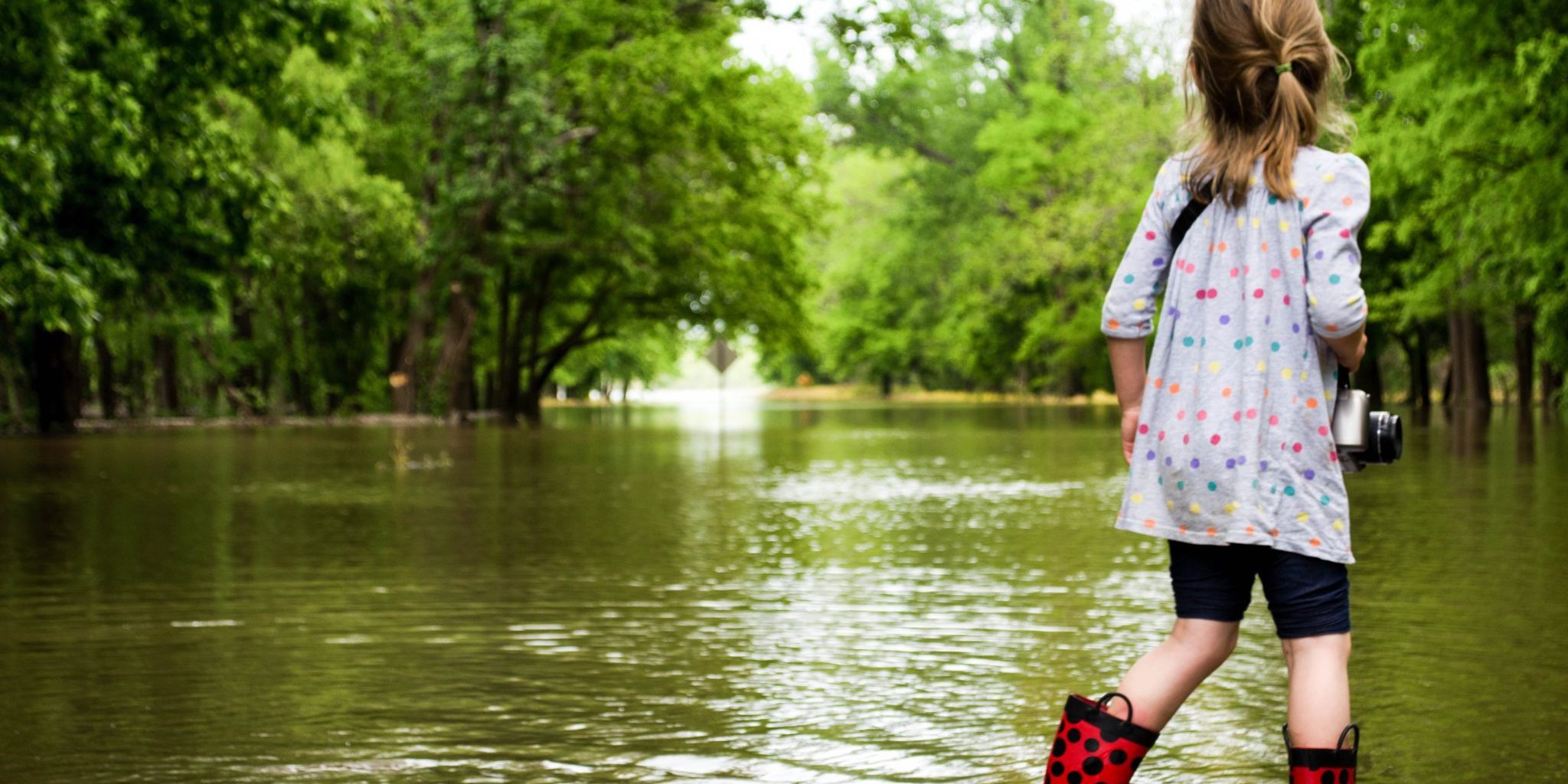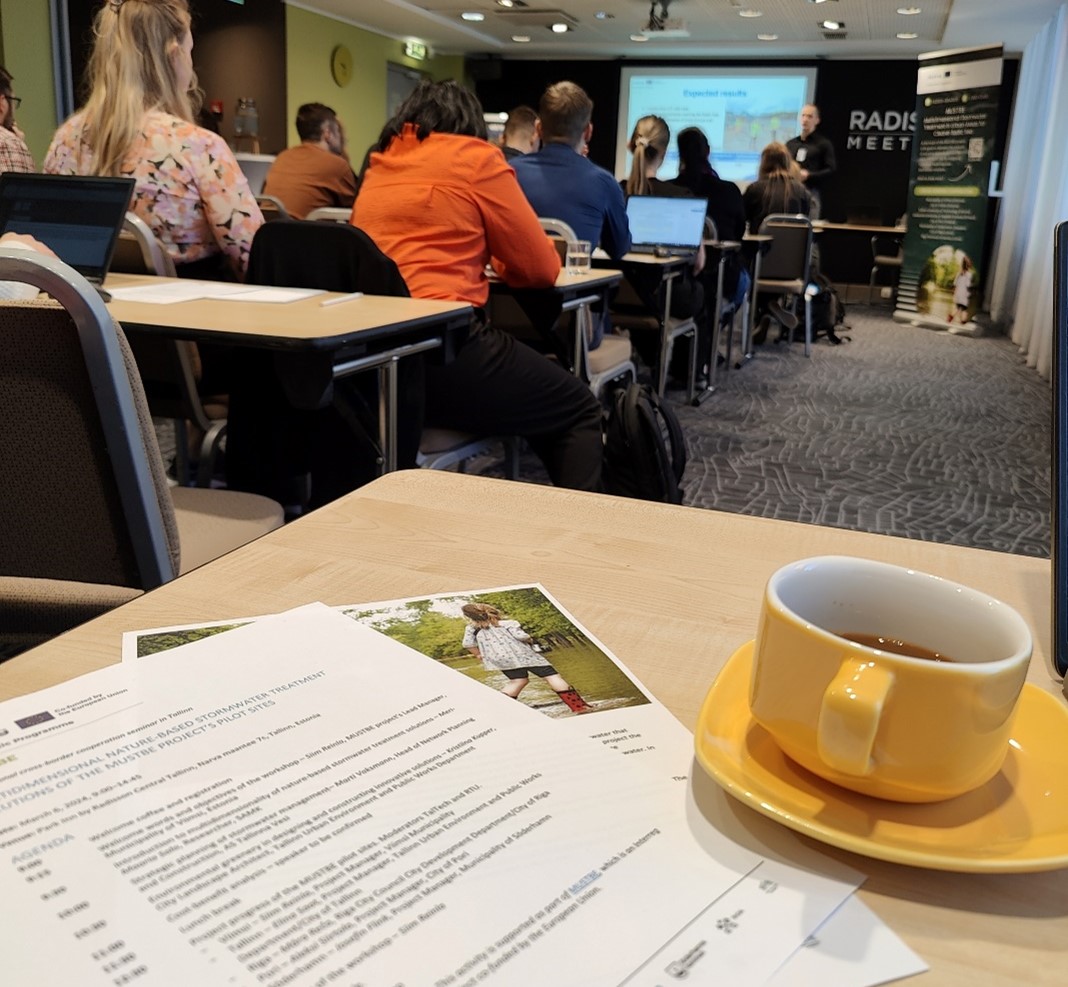We Research: MUSTBE develops multidimensional stormwater solutions to protect the Baltic Sea
MUSTBE is soon a year-old project, the first year of which laid the foundations for the two main objectives of the project: to develop digital and technical solutions to support urban and municipal stormwater planning and to raise awareness among stakeholders in the Baltic Sea region on how to improve urban stormwater management regarding environmentally hazardous substances.

The project has seven pilot sites in Finland, Estonia, Sweden and Latvia. The nature-based solutions developed at these sites aim to achieve the following concrete reduction targets for harmful substances:

Achieving these objectives has required a baseline assessment of water quality. In each of the pilot sites, the first phase has therefore focused on calculating the baseline and setting quantitative target levels accordingly, among other things. This was also one of the funding conditions set by Interreg Central Baltic, which is funding the project.
There is no single right solution to the stormwater challenges. Diverse challenges have thus led to different pilots and diverse solutions.
Seven pilots, seven solutions
Two of the MUSTBE pilot sites are located in Pori, Finland, two in Tallinn and Viimsi, Estonia, two in Söderhamn, Sweden, and one in Riga, Latvia. The pilot sites vary in terms of their environment, catchment area and the problem to be solved. Some pilots focus specifically on managing the amount of stormwater in the area, while others focus on improving the quality of stormwater. However, these are not mutually exclusive, and the solutions will in any case deliver diverse benefits.
The nature-based solutions in the pilot sites include wetlands, urban trees, stormwater detention through ponds and ditches, rainwater gardens and reusing of rainwater. In addition, some of the pilots will be able to use smart methods to control the flow of water according to the situation, for example. The effectiveness of the solutions in managing and treating stormwater will be monitored after installation. By integrating the treatment and reuse of stormwater close to its source, the management of stormwater fluxes during rainfall events as well as the monitoring of nutrients and hazardous substances, new multi-benefit and smart nature-based solutions can be produced.
Three work packages lead to multi-purpose stormwater solutions
Growing concerns about the impact of extreme weather events and pressures to slow down climate change in general have been reflected in the sustainable development plans of cities and municipalities - and thus in the MUSTBE project. The need to manage stormwater has increased, as has the need to manage floodwater. The impact of urbanisation cannot be ignored in the thematics regarding stormwater, as it further increases the number of impervious surfaces such as sidewalks and roads. Sustainable development must therefore also take into account the management of stormwater in extreme conditions, such as during heavy storms and rainfall.

Through three different work packages, the core of the three-year MUSTBE project encapsulates into seven different solutions, each with four common elements:
• Development of a monitoring programme
• Initial water quality baseline establishment
• Monitoring of NBS (Nature-Based Solution) efficiency
• Data presentation in online monitoring systems
One of the outputs of the project is a handbook on cost-effective monitoring methods. The solutions developed in the project are applicable to other similar areas around the Baltic Sea.
What makes stormwater management multidimensional?
Merriam-Webster defines multidimensionality as something "having or relating to several dimensions or aspects". In the context of stormwater solutions, multidimensionality in the MUSTBE project refers to the fact that while the primary benefit to be achieved is in the treatment of stormwater and the improvement of water quality, solutions must also have supplementary benefits. This may include benefits to human health and well-being, integrated levels of environmental protection (e.g. providing of ecosystem services), biodiversity, health or economic trade-offs and synergies, and opportunities for public participation in management and monitoring.
Coordinating interests is not always straightforward. On the one hand, there is a desire for a pleasant urban environment and green eye candy, but on the other hand there is a practical need for parking spaces. Planning the urban environment in such a way that everyone's needs are adequately taken into account requires, above all, good communication with stakeholders - an aspect that plays an important role in the MUSTBE project. For example, the aim is to involve residents around the pilot sites in the process, rather than simply watching it from the sidelines.
Info
- MUSTBE, Multidimensional stormwater treatment in urban areas for cleaner Baltic Sea, is a project co-funded by the Interreg Central Baltic programme for 1.5.2023-30.4.2026.
- The project focuses on stormwater, which refers to rainwater and snowmelt from built environment.
- Stormwater discharges pollutants and nutrients into the Baltic Sea from various sources, such as traffic.
- Nature-based solutions can bring a range of environmental, social and economic benefits
More about:

